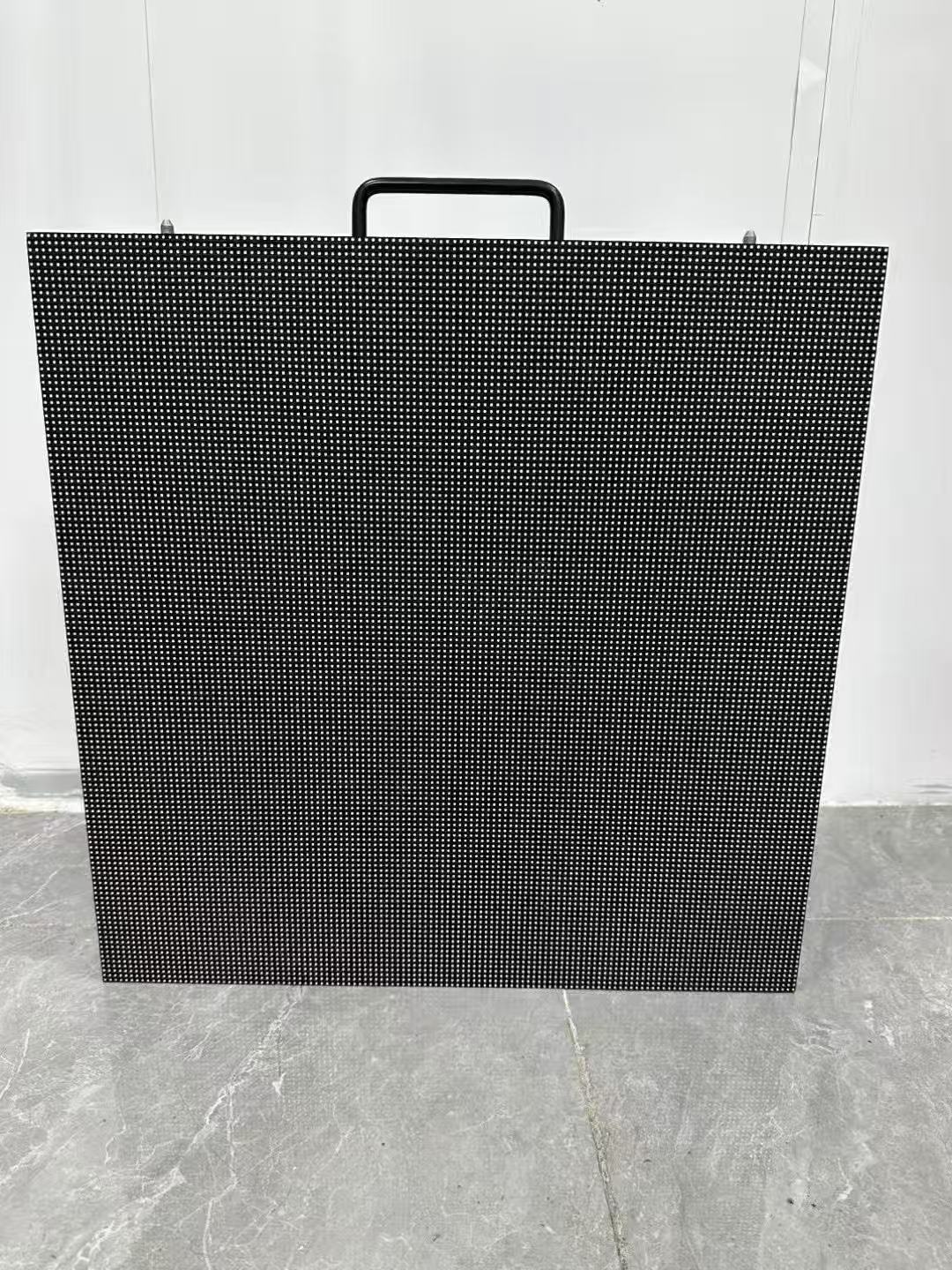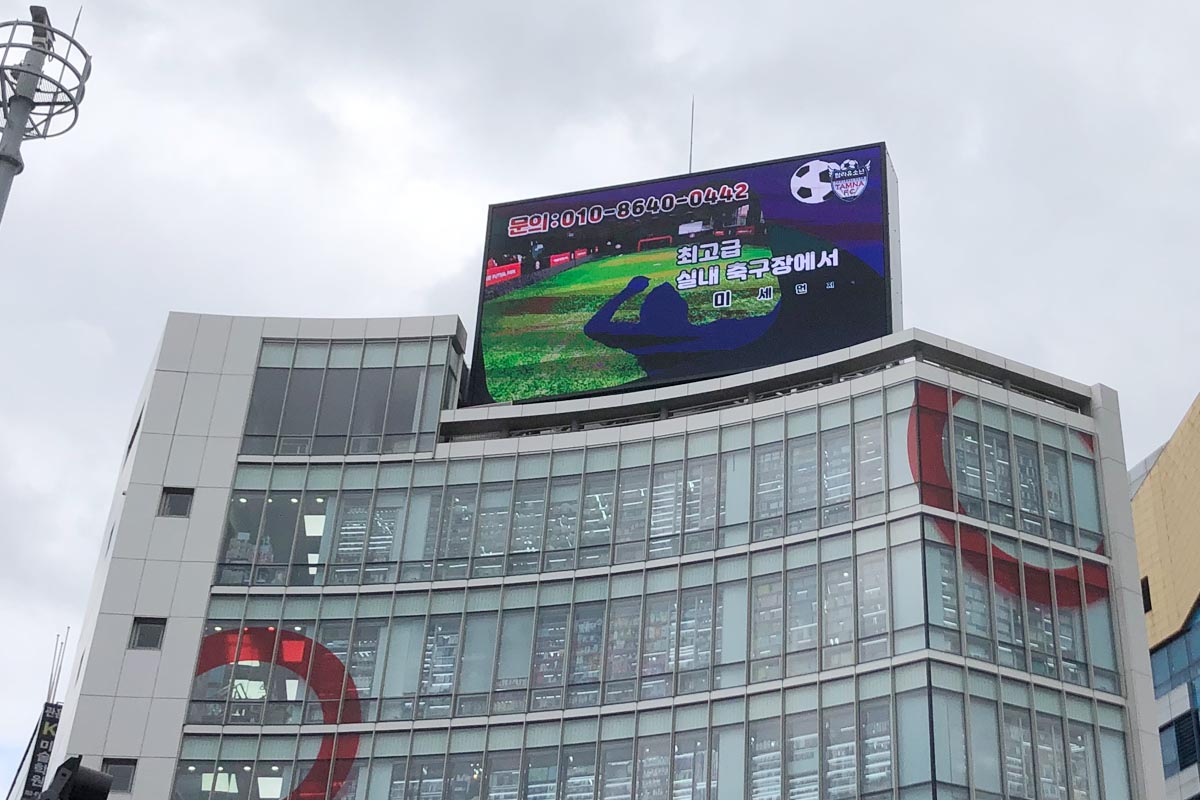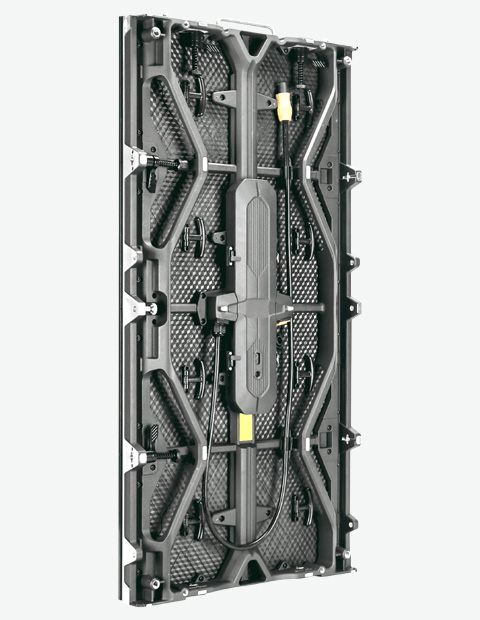The miniaturization of LED displays is an inevitable trend, with the industrialization process of Mini LEDs (MLEDs) accelerating. According to data from RUNTO Technology, the global LED display market size reached $7.1 billion in 2023 and small-pitch LEDs (including micro-pitch) accounting for $3.36 billion, or 47.3% of the overall market.
Mini/Micro LED display future development
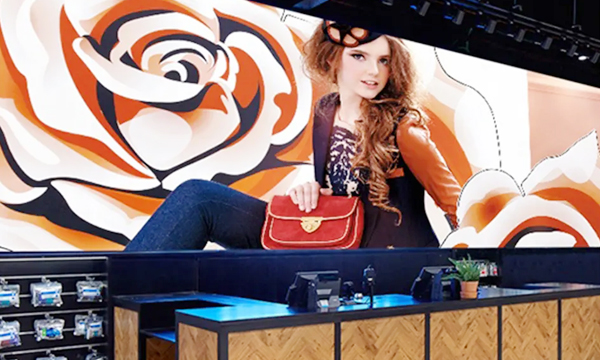
China’s LED display market size occupies more than 65% of the global share, marking a transformation from assembly manufacturing to full-scale Chinese production and application across various scenarios.
Amid the high-quality development of China’s optoelectronic information industry, numerous national policies and local city plans related to the LED industry have been released. RUNTO Technology’s preliminary compilation indicates that over the last decade, about 40 policies related to the LED industry were issued by the national government and various provinces. During the “14th Five-Year Plan” period, 17 provinces proposed development plans supporting the advancement of Mini/Micro LED display technologies.
From 2022 to 2023, there were 138 typical projects announced in the Mini/Micro LED field, covering the entire industry chain, including modules, chips, display terminals, packaging, and panel-related projects, which accounted for 91% of all projects. In 2023 alone, over 50 companies participated in these projects, with an investment scale nearing 180 billion yuan.
In terms of technology development, over 160 entities globally are engaged in Micro LED research, with more than 60 of these located in China. Patent application data reveals a rapid increase in the number of Micro LED patents since 2017, indicating a significant uptick in research and development activity. Leading Chinese display manufacturers such as BOE, Huawei, and Konka Optoelectronics are among the top 15 global innovators in Micro LED patent applications.
The development of Mini LED direct display, Mini LED backlighting, and Micro LED display
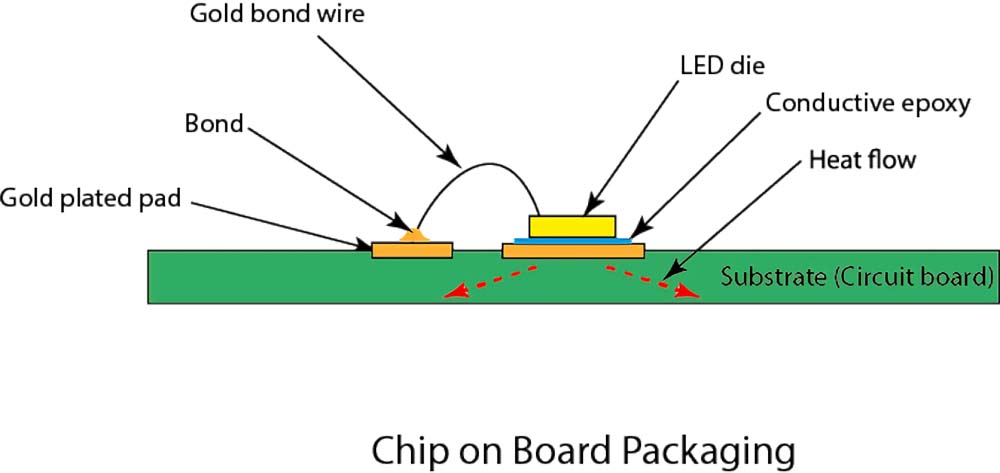
Mini direct view LED display: the result of further miniaturization of small-pitch LEDs
Mini LED direct display is an evolution of small-pitch LED technology, marking the industry’s move towards finer pitches. This technology has penetrated various applications including professional, commercial, and public displays.
According to RUNTO Technology data, the global market for small-pitch LED displays was $3.36 billion in 2023 and China accounting for 65.7% of this market. Micro-pitch (P<1.0mm) direct view displays are new application niches, achieving a 9.7% market share within the small-pitch LED display in 2023, with an average quarterly growth of more than 1 percentage point. RUNTO Technology predicts that by 2028, the global market for Mini LED direct displays (P<1.0) will exceed $3 billion, with a compound annual growth rate (CAGR) of about 40% from 2024 to 2028.
COB technology has emerged as a high-end development direction for small-pitch LED display packaging, driven by maturing technology and decreasing costs. In 2023, COB products accounted for 13.2% of China’s overall small-pitch market, with an impressive 43% share in the micro-pitch (P<1.0mm) segment. By 2028, COB technology’s market share in China’s small-pitch LED (P2.5 and below) display market is expected to reach over 30%.
Mini LED backlight: expanded applications, rapid market penetration of mid-to-high-end products
Mini LED backlighting is expanding rapidly, especially in mid to high-end products such as TVs, laptops, tablets, and monitors. Mini LED TVs have become a significant growth area in the market, with global shipments reaching 4.25 million units in 2023, a 24.6% increase from 2022. In the monitor display, China’s Mini LED monitor online sales grew by over 90% in 2023, with sales of mid to high-end products (priced over 4000 yuan) making up 22.4% of total sales.
Micro LED: Focus on ultra-large size and near-eye displays
With a development history of 15 years, Micro LED technology focuses on applications in super-large displays and near-eye displays, including AR glasses and vehicle displays, as well as digital signage and video walls for commercial display, meeting rooms, and residential decoration. The global market for Micro LED displays is expected to surpass $10 billion by 2028, reaching $10.2 billion.
Overall, the combined global market for Mini/Micro LED technologies is projected to reach $36 billion by 2028, with a CAGR of over 50% over the next five years.
From the above we know that the micro-pitch LED screen has a great development prospect, but do you know there are so many packaging technologies and why is preferred COB + virtual technology?
What is a virtual pixel?
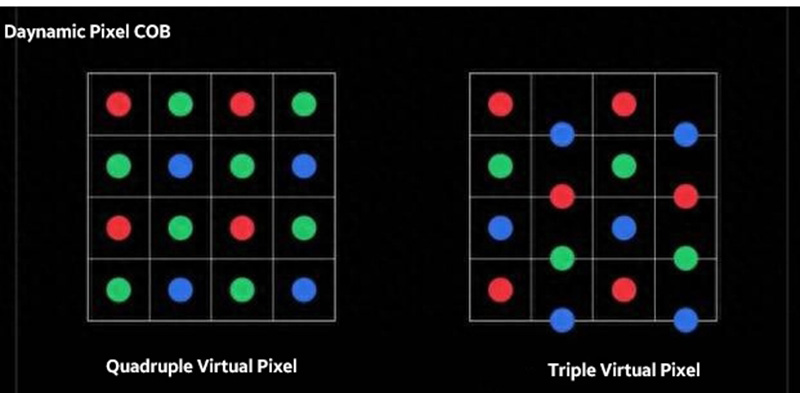
Real pixels and virtual pixels are two different types of pixels for LED displays.
Real pixel means that the relationship between the number of physical pixel points on the display and the number of pixel points actually displayed is 1:1, that is, the display can only display information of how many pixels if there are as many physical pixel points.
Virtual pixel is a new type of display technology for LED display, which makes the display can show more image details and effects than the actual pixel points by combining and distributing the physical pixel points. Simply put, virtual pixels can display 2 or 4 times more image pixels than the actual pixels of the display. For example, when R, G, and B are distributed in 2, 1, 1, a pixel point consists of two red tubes, one green tube, and one blue tube, which allows the display to show four times as many image points.
Advantages of the virtual pixel

Virtual pixel technology can effectively improve the display effect and cost-effectiveness of LED display, which is currently usually used in small micro-pitch of P0.1-P2, bringing better visual experience and commercial value to customers.
- High brightness: Since the virtual pixel point is combined with multiple physical pixel points, its brightness can exceed the brightness of a single physical pixel point, which can maintain clarity in a high-brightness environment.
- High Definition: Virtual Pixel technology is able to combine multiple physical pixels into a single virtual pixel, resulting in more detail and clarity of the image
- Better Viewing Angle: Virtual Pixel technology can better improve the viewing angle of the LED display, enabling viewers to see clear images from a wider angle.
- Higher cost-effectiveness: virtual pixel technology can effectively improve the cost-effectiveness of LED display, so that customers can get better display effect at a lower cost.
Why Choose COB Virtual Pixel LED display?
In the era of ultra-high-definition display, weighing the cost of the process and the actual effect, the virtual pixel may become the choice of mainstream brands, and more likely to be the way of the future display technology.
Only with COB-integrated packaging technology, RGB LED chips can be arranged arbitrarily, which eliminates the similar imitation of SMD small-pitch display technology from the root, forming a competitive advantage of differentiation, and also makes it easier for COB LED display.
Virtual pixel technology makes the design and application of LED display more flexible. For example, by changing the method of chip arrangement and then utilizing the illusion of delayed human visual response to accelerate the lighting of the chip, the original 2K/4K display reaches 4K/8K display effect.
Virtual pixel technology may have a wide range of application prospects in the future of LED display, especially in terms of high resolution, low cost, innovative design, flexible application and expanding more fields.
Leading LED screen manufacturers talk about COB LED virtual technology
Unilumin Technology
Although different from physical pixel technology, virtual pixel technology can achieve an effective logical pixel count of 60-80% of the physical pixel count with only one-third or one-fourth of the physical pixels. This means that with the investment and cost of one set of physical hardware, approximately 2.5 to 3.5 times the clarity effect can be achieved.
Virtual pixel technology provides a viable way for LED displays to achieve ultra-high definition displays with controlled costs in the micro-pitch era. This technology greatly enhances display effects, achieving higher resolution and more detailed display effects while significantly reducing power consumption.
It brings substantial changes to the future of the LED display industry, making it a “good and economical” innovation that will undoubtedly accelerate the global adoption of LED direct view display applications into a new era of higher quality.
Leyman Optoelectronics
Leyman introduces Pixel Engine technology as a technique that balances display effects and cost by using different pixel arrangements to achieve sub-pixel reuse. This technology is not designed to achieve the ultimate display effect, but rather to sacrifice some display quality, primarily resolution and color accuracy, to significantly reduce cost.
However, in certain scenarios, such as displaying static and dynamic images at appropriate viewing distances, products using pixel engine technology still deliver very good display effects. Leyman’s mass-produced pixel engine products with pixel pitches of P0.4, P0.7, P0.9, and P1.2. They are designed for optimal viewing distances of 2, 3, 4, and 5 meters, respectively.
Beyond these distances, the display effect remains impressive, as demonstrated by a 220-inch 4K display using Pixel Engine technology with a P1.2 pixel pitch on display in Leyman’s exhibition hall. This technology facilitates market entry by significantly reducing costs while still delivering stunning display effects at distances beyond 5 meters.
IAM LED WALL

By using a unique pixel multiplication algorithm,it can allow each LED unit to contribute to the imaging of multiple adjacent pixels, resulting in a multiple increase in display resolution while maintaining low manufacturing costs. This innovation balances supreme display effects with cost-effectiveness, allowing for flexibility in adapting to different application scenarios and requirements.
In cases where supreme display effects are desired, resolution and picture quality can be enhanced by increasing the number of LED units and optimizing their arrangement. In scenarios where cost-effectiveness is a priority, resolution and picture quality requirements can be lowered to meet display needs at a lower cost.
Conclusion:
GDHANHENG’s COB display products, cover a pixel pitch range of P0.4-P1.5mm. Compared with traditional small-pitch COB products, GDHANHENG’s products offer significant improvements in resolution, brightness, contrast, color uniformity and display grayscale.
In addition, they support high dynamic range (HDR) quality, presenting lifelike color effects and providing users with an immersive visual experience. This not only reduces costs but also enhances the core competitive advantage of the product’s display.
